- Question 1
- Question 2
- Question 3
- Question 4
- Question 5
- Question 6
- Question 7
- Question 8
- Question 9
- Question 10
- Answer Key
- Additional Helpful Resources
Question 1
An esterification reaction is to be performed. Which of the following substances, when added, would increase the yield of the product? (1 mark)
A. Water
B. Boiling chips
C. More alkanol
D. Dilute sulfuric acid
Question 2
The diagram shows the mass spectrum of an organic compound

Which compound was analysed? (1 mark)
A. Butan-1-amine
B. Butanoic acid
C. Ethanoic acid
D. Iron(II) sulfide
Question 3
A bottle of solution is missing its label. It is either Pb(NO3)2, Ba(NO3)2 or Fe(NO3)2. Using only HCl, NaOH and H2SO4 solutions, outline a sequence of steps that could be followed to confirm the identity of the solution in the bottle. Include observed results and ionic equations in your answer. (4 marks)
Question 4
The following apparatus was used in an experiment to determine the molar enthalpy of combustion of ethanol.

a) Calculate the experimental molar enthalpy of combustion ΔH of ethanol when 0.370g ethanol was used to raise the water temperature from 18.5°C to 30.0°C. (4 marks)
b) Upon replication, the molar enthalpy of combustion obtained in the experiment was consistently much lower than the accepted value. Explain ONE change that could be made to the experiment that would improve the accuracy of the obtained value. (2 marks)
Get direct advice from our HSC Chemistry Tutor Specialists who can help you with organic chemistry preparation and general exam strategy! 👇
Question 5
The following reaction scheme can be used to synthesise ethyl ethanoate.
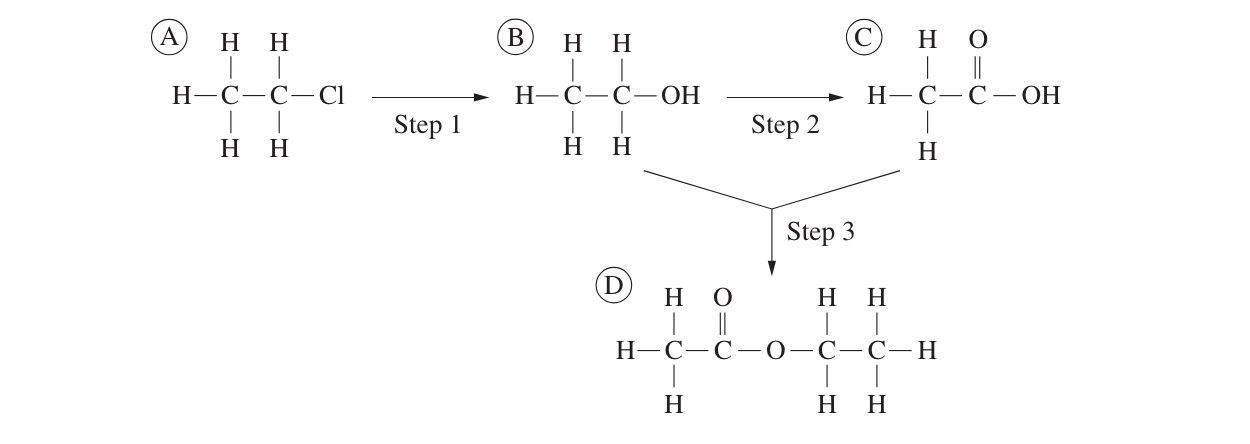
Outline the reagents and conditions required for each step and how the product of each step could be identified. (7 marks)
Question 6
A 0.1 mol L−1 solution of an unknown salt is to be analysed. The cation is one of magnesium, calcium or barium. The anion is one of chloride, acetate or hydroxide. Outline a sequence of tests that could be performed in a school laboratory to confirm the identity of this salt solution. Include expected observations and a balanced chemical equation in your answer. (5 marks)
Question 7
The flow chart summarises an industrial process for the synthesis of ethane-1, 2-diol.

Explain THREE factors that may have been considered in the design of this industrial process. Make specific reference to the flow chart. (4 marks)
What Our Students & Parents Say
Real reviews from students and parents across all our tutoring programs — collected from Google, Trustpilot, and more.
Question 8
Explain TWO advantages and TWO disadvantages of using bioethanol (ethanol produced from biomass) as an alternative to a fossil fuel. (4 marks)
Question 9
A low molecular weight biopolymer is being investigated for its suitability for medical use. In one trial a molecular weight of 2900 ± 100 g mol−1 proved to be optimum.
A section of this biopolymer is shown.

Which will produce the suitable biopolymer? (1 mark)
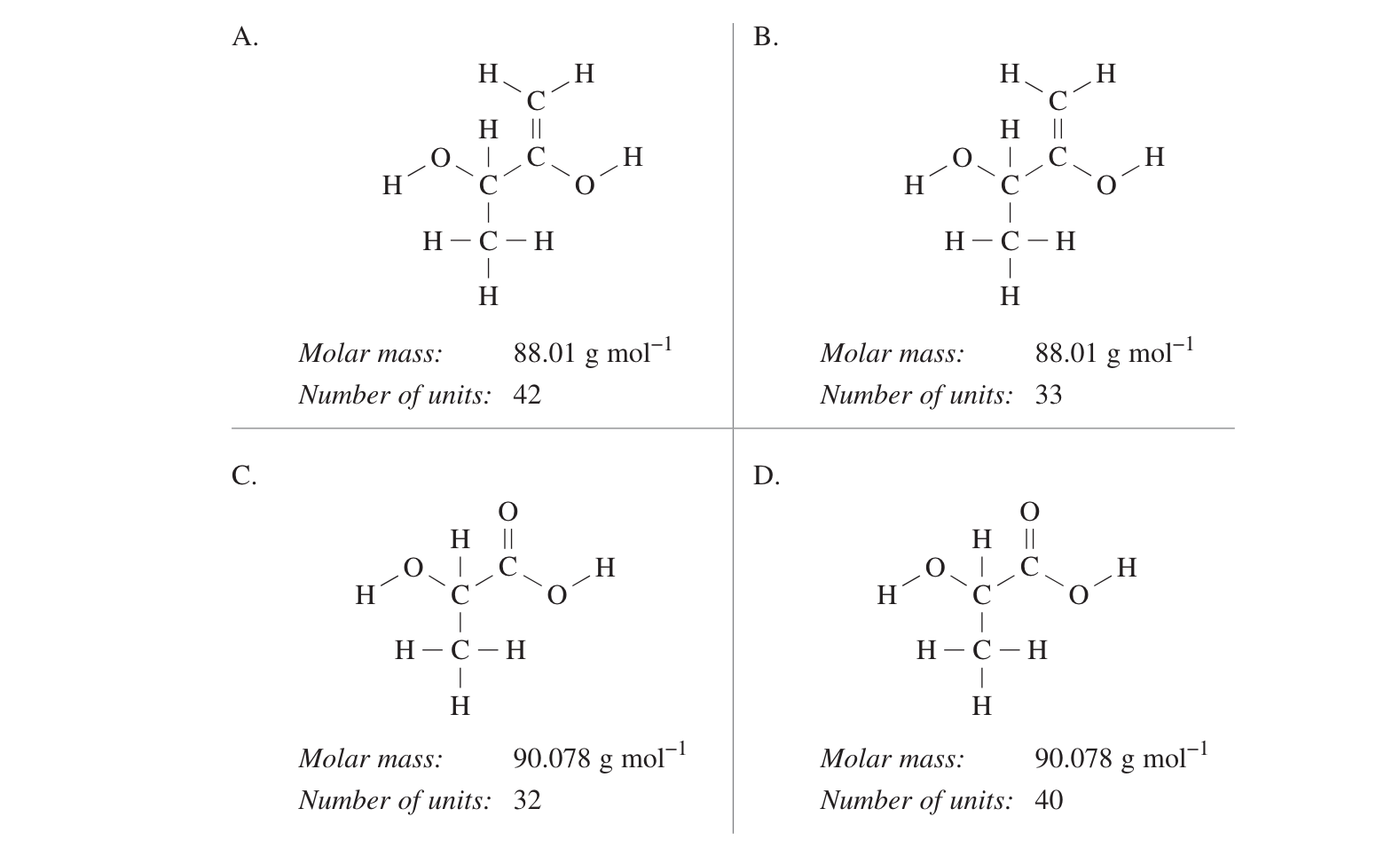
Question 10
A chemist obtained spectral data of pentane-1,5-diamine
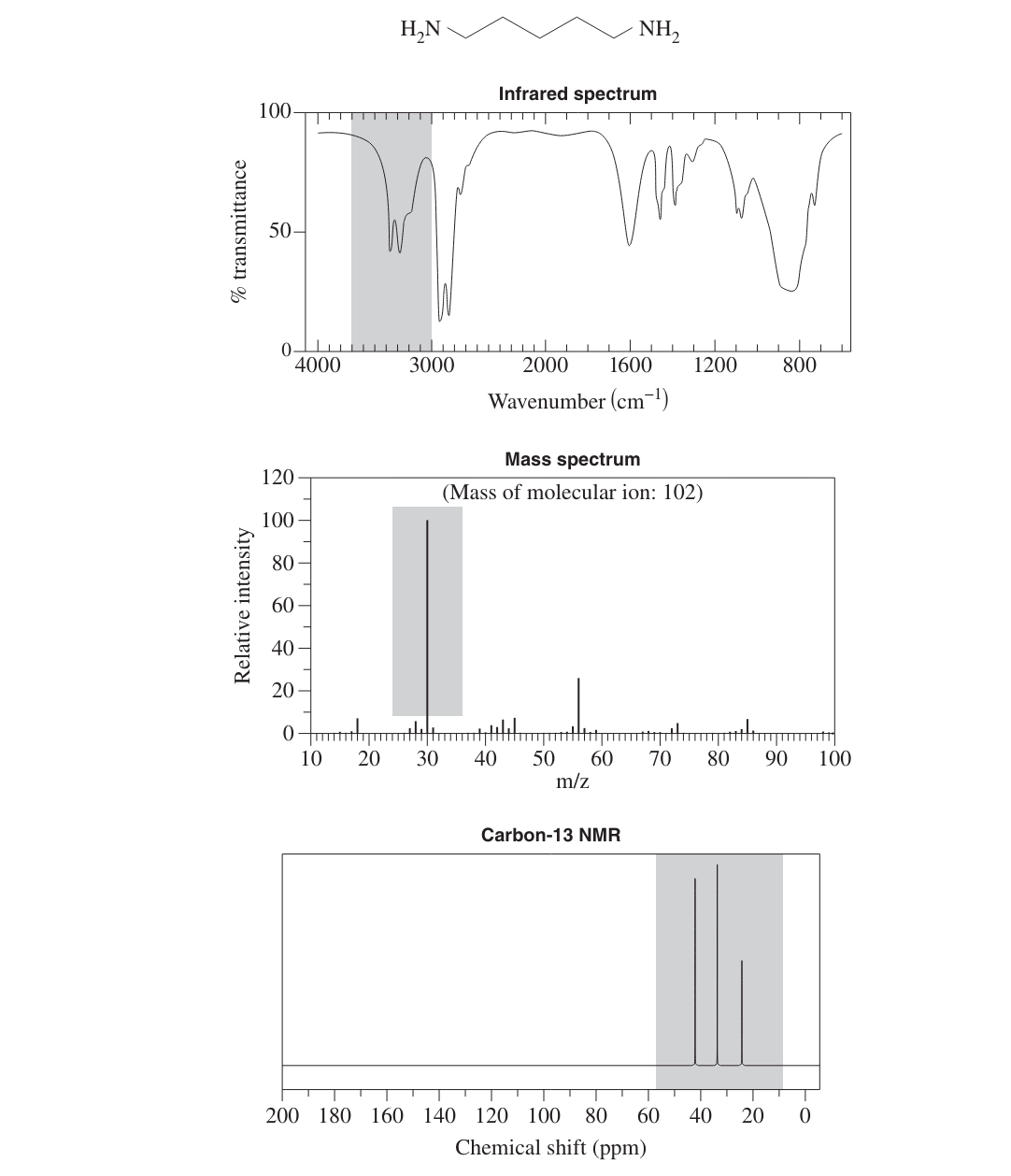
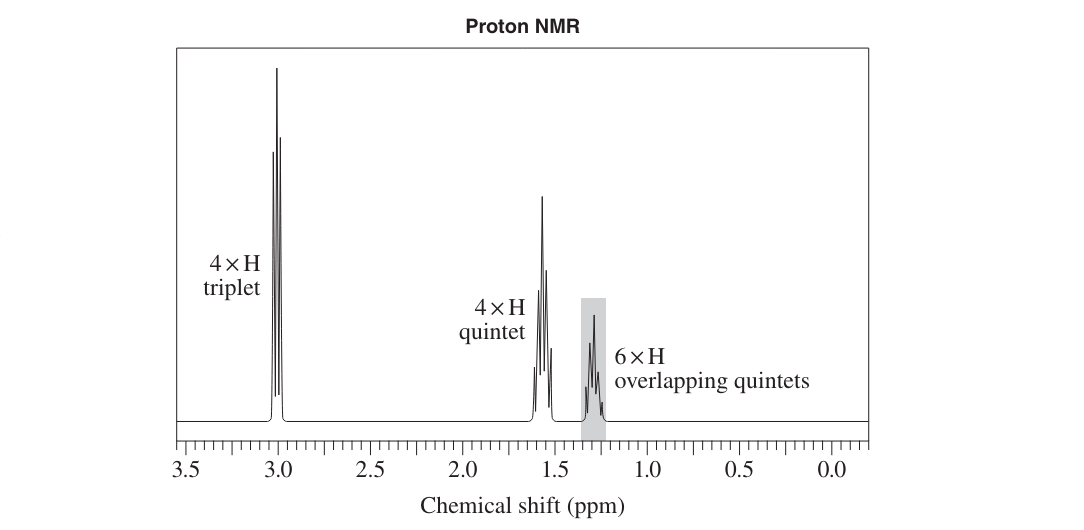
Relate the highlighted features of the spectra to the structure of pentane-1,5-diamine. (7 marks)
Answer Key
Question 1. C
Question 2. B
Question 3.
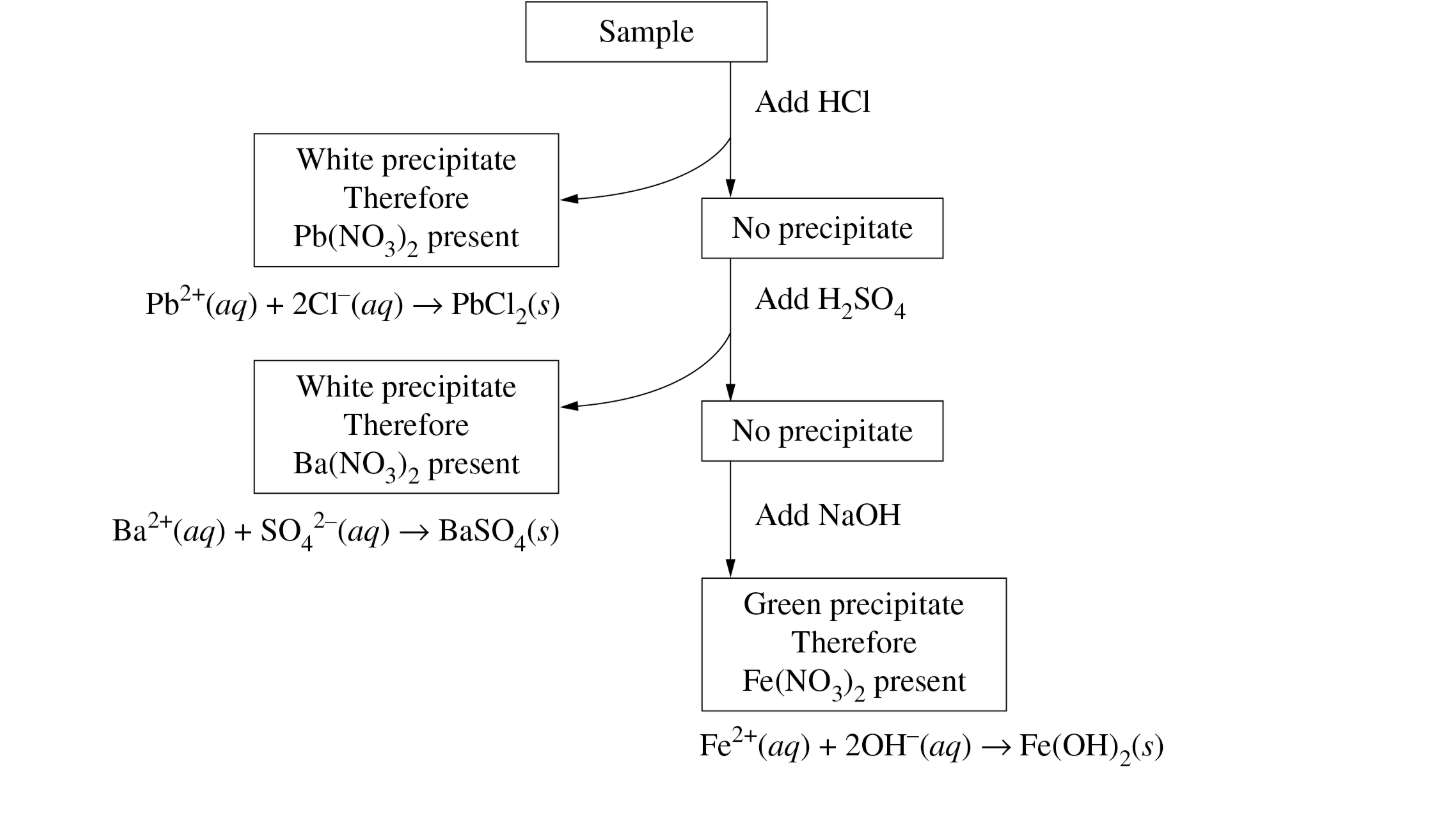
Question 4. a)

Question 4. b)
The experimental value for the molar enthalpy of combustion is low, primarily due to heat loss to the environment. A change that would reduce heat loss and improve accuracy is moving the spirit burner closer to the beaker.
Question 5.
Sample Answer: In step 1, chloroethane (A) can be converted to ethanol (B) by heating with dilute aqueous potassium hydroxide. The mass spectrum of ethanol will have a single molecular ion peak at m/z = 46, whereas chloroethane will give two peaks at m/z 64 and 66. In step 2, ethanol (B) can be converted to ethanoic acid (C) using a strong oxidant, for example: acidified potassium permanganate. A C=O peak will appear in the IR spectrum (1680–1750 cm–1) or in the 13C NMR spectrum (160–185 ppm); ethanol will show neither peak. In step 3, ethyl ethanoate (D) can be synthesised by heating a mixture of ethanol, ethanoic acid and concentrated sulfuric acid under reflux. The 1 H NMR spectrum of ethyl ethanoate will have 3 signals, whereas both ethanol and ethanoic acid will have 2.
Question 6.
For the cation Carry out a flame test:
– If pale green → barium
– If brick red → calcium
– No colour → magnesium
For the Anion
1. Add Cu(NO3)2(aq): If pale blue precipitate forms then OH– (hydroxide) is present.
2. Add AgNO3(aq): If white ppt forms then Cl– (chloride) is present.
Ag+(aq) + Cl-(aq) → AgCl (s).
If no ppt forms then CH3COO– (acetate ion) is present.
Question 7.
The use of a catalyst in reactions 1 and 2 allows a faster rate at a lower temperature. This both increases the efficiency of the process and reduces energy consumption that makes the process more economical and ultimately less polluting. Unused reactant gases are recycled after being separated from the reaction mixture in separator 1. This means that resources are not wasted – making the process more economical as less reactant needs to be purchased from suppliers. Markets have been accessed for the major product (ethane-1,2-diol) – without a market the industrial process is not economically viable – the location of these markets has been determined and suitable transport arranged – the industrial plant has probably been located near a major port, rail or road network to facilitate economical and rapid transport to markets.
Question 8.
Bioethanol is produced from renewable resources while petrol is produced from nonrenewable crude oil reserves. Thus, ethanol is a sustainable fuel, which may be continually produced while petrol is unsustainable. Combustion of petrol increases greenhouse gas concentrations in the atmosphere. If green energy is used to produce bioethanol, the carbon dioxide released during the combustion may be removed by plants during photosynthesis, resulting in a carbon neutral process. Increased demand for ethanol to replace petrol may cause crops to be grown for fuel rather than food. Food shortages or increased food prices may result. As more crops are grown to produce biofuels, more fertiliser is used. The excess use of fertilisers can result in soil erosion and can lead to land and water pollution.
Question 9. D
Question 10.
For 7 marks, students must: Demonstrate a comprehensive understanding of the relationship between the highlighted features of the spectra and the structure of pentane-1,5-diamine and refer to the relevant spectroscopic data in each of the four spectra.
Additional Helpful Resources:



FAQs
1. What other resources are there to help my Studies?
- Past year papers
- Tutoring
- Online study guides
2. What is the Best way to study for Chemistry?
- There is no best way; there is only the best way for you.
- Try out different study methods to see what suits you best. Is it looking through the content, taking notes, and then doing practice papers to test your knowledge? Or is it just spamming practice questions?
- Find out what works for you, and stick to that!







